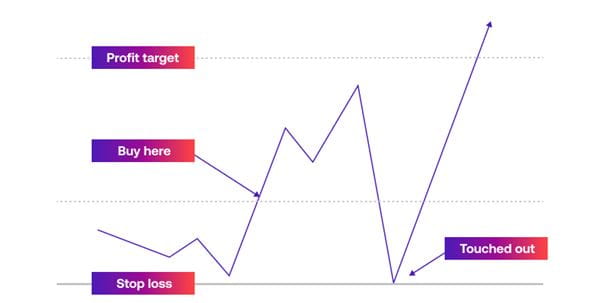
Whipsaws in trading are sudden market movements that occur in volatile conditions and can trap traders in losing positions. Find out how to avoid whipsaws.
What is a whipsaw?
A whipsaw is a drastic increase or decrease in a market trend, which results in large losses for a trader that has recently opened a position. The move is so sudden and unpredictable that any previous analysis used to inform the trade is irrelevant.
There are two types of whipsaws:
- Upmarket whipsaw – occurs when the price first breaks out upward, and indicators confirm the rally, but it’s followed by a drastic downward move
- Downmarket whipsaw – occurs when a price falls in value briefly, and indicators confirm that decline, but it’s followed by a surge upward
In both situations, the price ends up trading nearer to its original price.
How to identify whipsaws
Whipsaws in trading are difficult to identify, but they usually happen in extremely volatile market conditions, where the price moves sharply without apparent reason.
A lot of whipsaws occur when prices are shown as overbought or oversold, but the trend continues despite the signals being given by indicators. This happens in periods of irrational exuberance, where traders can believe that a bullish or bearish run will continue indefinitely.
When more and more traders pile into a move, ignoring analysis, the market can become overheated. As prices move further away from their true value, the chance of a sudden reversal increases.
For example, say a stock is trading at $350 and indicators show its price is overbought. But traders continue to believe in the stock’s potential and continue buying. So, its price shoots up to $400. Suddenly, the market reverses to $320. These sharp movements are a whipsaw.
Had a trader opened a long position based on the indicator signals, they’d potentially face large losses without the proper precautions.
How to avoid whipsaw in trading
Since it's so difficult to predict, there’s no way to avoid the whipsaw entirely. But you can cap the losses that may occur by attaching a stop-loss order to your positions.

Stop losses automatically close a position if the market turns against the trade by a certain amount. This limits losses but it would also mean that if the market regains momentum in the original direction, the position would’ve been closed.











